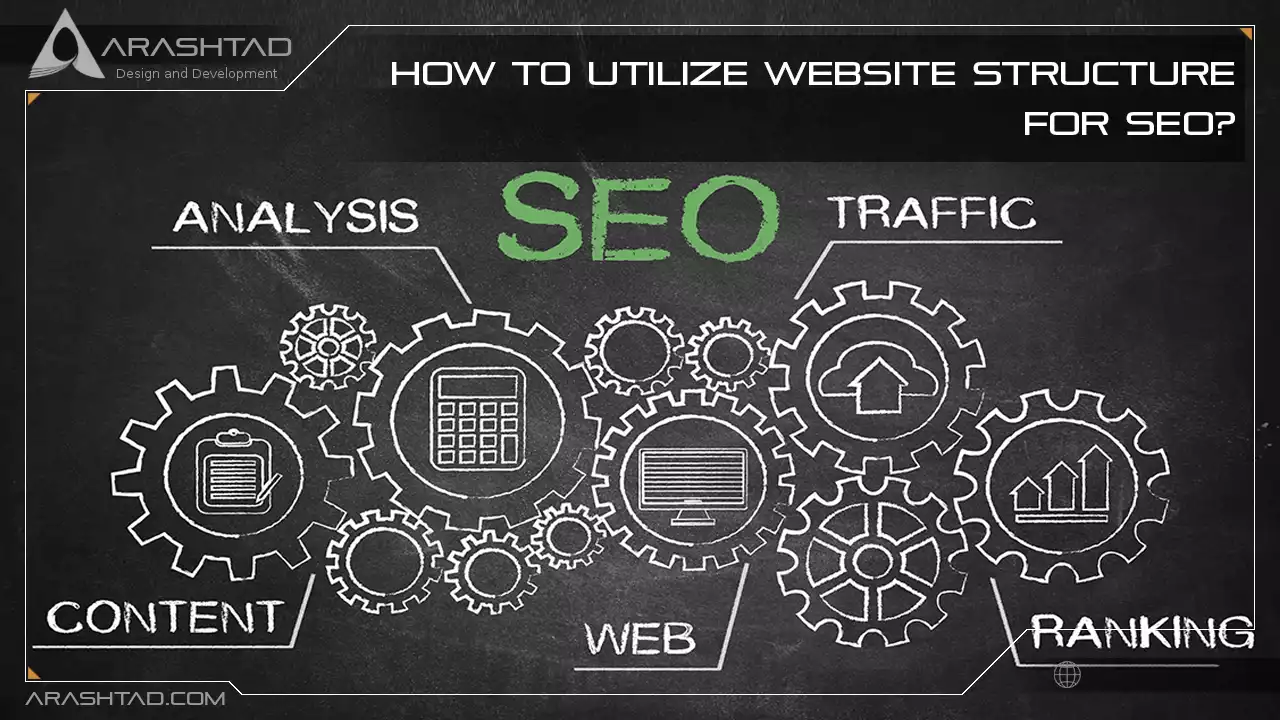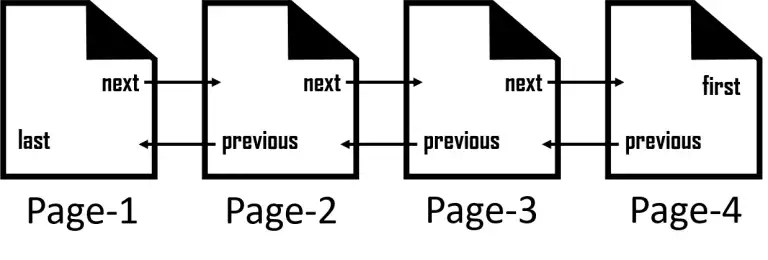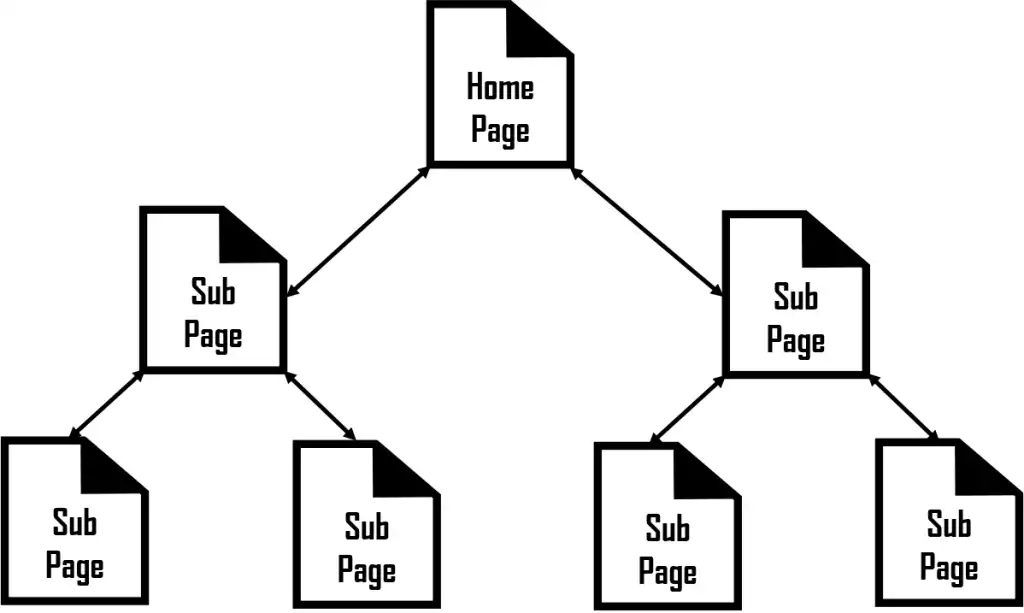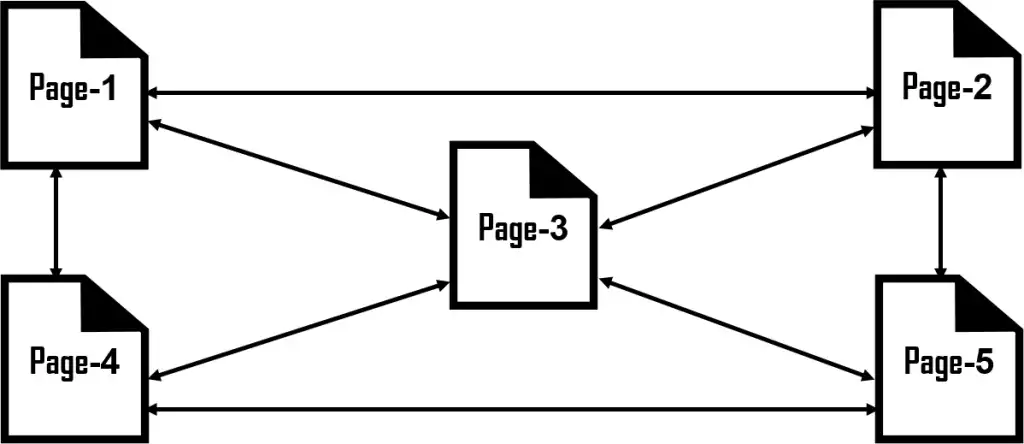How to Utilize Website Structure for SEO?
An organized website turns a messy set of web pages into one that users and search engines love. For both, a clear understanding of how your website is structured and how to find relevant information is essential. What are the most important rules for creating a solid website structure? What should it look like from the start, and how should it be developed? It would help if you took a few simple but crucial actions to build a good foundation for SEO while developing your site.
What is Website Structure?
As we mentioned in How to Improve SEO Rankings? a website structure or architecture describes how the various pages are connected to your website to provide great user experiences. This is essential not only from a user’s perspective but also for search engine optimization.Types of website structure
The three types of structure most commonly used on websites are:Sequential Model
The sequential model is best suited to websites with a basic structure and not too many pages, known as the linear model. Some websites do not require more than one page to convey information. Small businesses tend to use the sequential model. This model is suitable for websites without subcategories or child pages. It usually consists of the main page, a home page, or a landing page. There are a few basic parent pages followed by a call to action for the users. In most cases, this model leads the user in a straight line through a website.Hierarchical Model
The hierarchical model is widely used as a web structure because it is very easy to understand. Also referred to as the tree model, it is used in websites that have a lot of information distributed over many pages. To distribute the website structure, a hierarchical model uses a home page, the main category page, a subpage, and a child page within a subpage. To convey the hierarchy of the pages to search engine algorithms, this model also uses internal links to connect child pages, subpages, and category pages. With this approach, websites can clearly communicate the significance of their pages, as well as the relevance of their content.Matrix Model
Often referred to as the webbed model for website structures, the matrix model combines all the parent pages with the subpages and the main page to allow users to access everything in minimal clicks. It is named after the visual it creates for a website structure, which is a web of landing pages. It is ideally designed for eCommerce websites so that product pages can be seamlessly connected to retail pages and payment gateways. By using internal links, the user is able to access any pages they wish via a minimum number of clicks. The lack of structure may seem strange to some, but that is almost the point. You can experience the website however you like based on your needs, even if you change your mind.Database Model
A database model uses taxonomies and metadata to define website structure, which is almost the opposite of the hierarchical model. As they walk through the website’s internal pages, users can create their own unique website experience. In most cases, this model is used by search engines like Google and even bank websites, where the information displayed on the website is customized for you. From there, data is retrieved from a database to guide your journey on the website.The importance of website structure
There are several benefits to having a good website structure, including the following:Enhanced UX
When a website has a good structure, visitors can easily find the information they need and navigate to other relevant pages. This can enhance the user experience (UX). You can learn more about UX importance in Why is UI/UX Important?Content management becomes easier
Keeping your site organized makes it easier to find duplicate content and identify important pages that might be missing. This helps you find duplicate content easier.Enhanced search engine rankings and crawlability
You can improve your SEO by ensuring your pages are linked to relevant pages on the same or similar topics, also called content clusters. This will make it easier for search engine crawlers to find your pages. It can also help your SEO with improved user metrics because a good site structure improves the user experience.What is the best way to structure a website?
The hierarchical structure of a website with parent and child pages is generally considered a good structure. They include the following elements:Homepage
The homepage of your website serves as a central point of navigation. It’s important to include links to all important pages of your website and ensure the users can find the information they need from your homepage.Navigation
It would help if you categorized all of your website pages systematically so that users can easily identify what they’re looking for. The navigation of your website allows visitors to understand its structure. Using short phrases and simple language, you can create a good navigation scheme.Categories
Creating an adequate website structure requires the use of categories and subcategories. Create different categories for different types of content. Group similar content together and add a subcategory if needed. Creating categories for different kinds of books is a good example if you sell books.Subcategories
It is a great idea to practice internal linking using subcategories. Categories can serve as pillar pages with many subcategories, but don’t overload your users and search engine bots with too many categories. Make sure your subcategories are balanced so that your site structure is clean. For instance, if one category has 14 subcategories while another only has two, you may need to restructure your content.Individual Pages
Individual pages and blogs on your website need to be well-organized so that your intended audience can easily find the content they seek. Meta tags, breadcrumb trails, and contextual links are the best ways to structure information on individual pages.Breadcrumbs
You can use breadcrumb trails to navigate your website’s posts and pages. A breadcrumb trail is a set of links that provide users with a structure for your website and enable them to see different posts on your site. The breadcrumb trail offers a great way to improve the user experience on your website.Tags
As the name implies, tags group together similar content on your website. They are quite similar to categories. However, categories can be further subdivided into subcategories. Tags, on the other hand, cannot be subdivided and only work when similar content is grouped together.How to design an SEO-friendly website structure?
Due to the crawl, index, and rank process, a properly structured site could also result in higher rankings on Google. Let’s discuss the best practices for creating a site structure that is SEO-friendly.Be strategic before you start
Planning before executing anything is the best way to do it. Take out a piece of paper and a pen and draw a rough sketch of what your website should look like. You can list down the various important sections, categories, and products on your website. You can use this to get a better grasp on the skeleton of your site. A new website should be designed with SEO techniques in mind as soon as possible. Picking the right website structure is crucial here. A flat site structure where all pages are just a click away from your home page can sound easy to implement. However, a hierarchical site structure can help Google better understand your website.Website Symmetry
A website’s structure remains after you eliminate the colors, fonts, kernels, graphics, and images. Maintaining symmetry in the structure is satisfying to the user. Keep the number of categories between 2 and 7, and make sure each category has an equal number of subcategories. Symmetry prevents your website from looking uneven.URL structure
Ideally, URL structures should follow the page hierarchy. This won’t be much of an issue if your website already has a good structure. However, pay attention to the ‘slug’. A slug refers to the tail end of the URL. Using a readable name in the slug instead of the ID number of the page helps crawlers and users to read better and understand the page’s content.Internal Linking
As a key SEO technique, internal linking connects pages on your website with one another. This improves the user experience because essential pages are easily accessible with fewer clicks. A good internal linking strategy can boost link juice flow within a domain, resulting in better rankings for your website.W3C Validation
Validation by the World Wide Web Consortium (W3C) verifies your website’s HTML and XHTML documents for well-formed markup. W3C Confirmation ensures the site works in all browsers.Conclusion
To create a successful website, you should think and plan carefully about how your website should be structured. It is a crucial aspect of search engine optimization. However, if your website is already live, you can always improve its structure and design for SEO. It will benefit both users and crawlers. Therefore, do not hesitate to invest your time and resources into creating an SEO-friendly website.Download this Article in PDF format

Arashtad Custom Services
In Arashtad, we have gathered a professional team of developers who are working in fields such as 3D websites, 3D games, metaverses, and other types of WebGL and 3D applications as well as blockchain development.
Arashtad Services
Drop us a message and tell us about your ideas.
Fill in the Form
Blockchain Development




